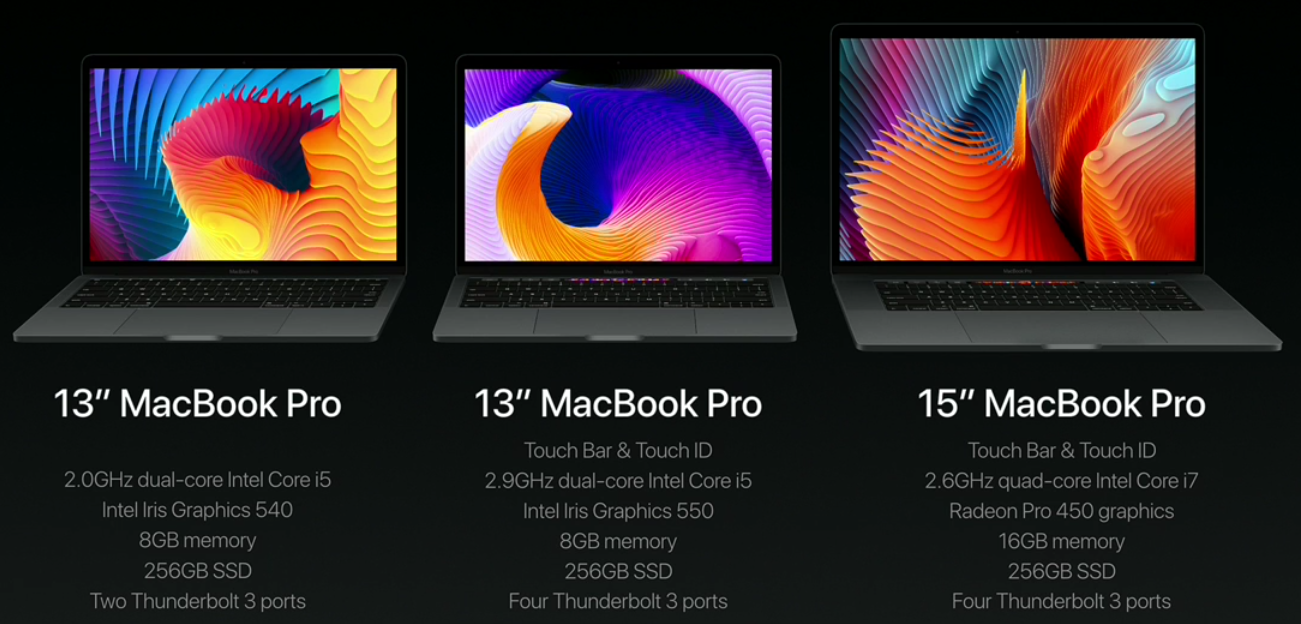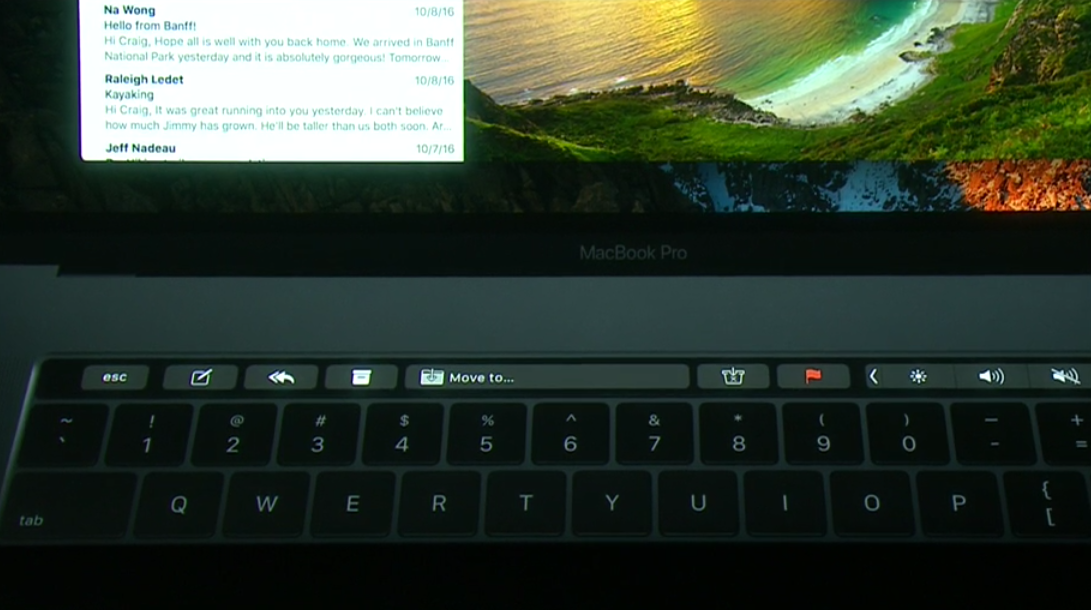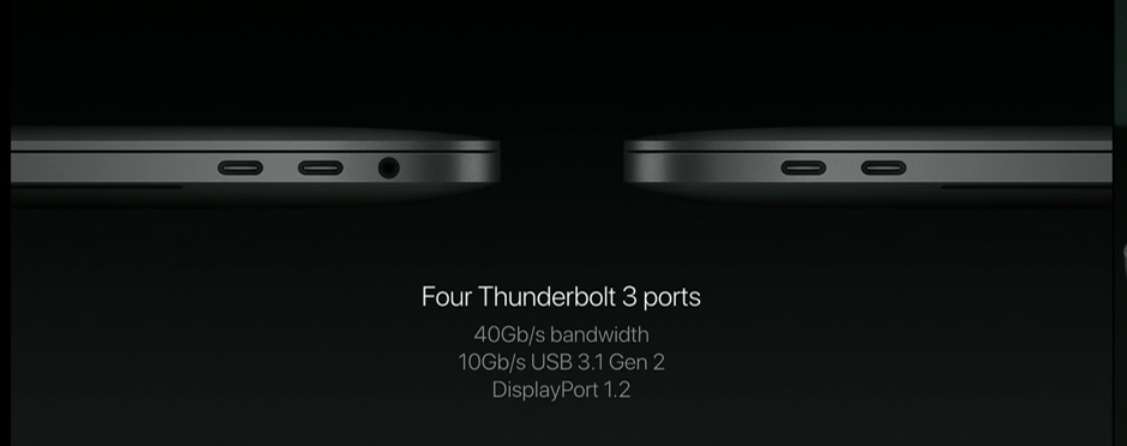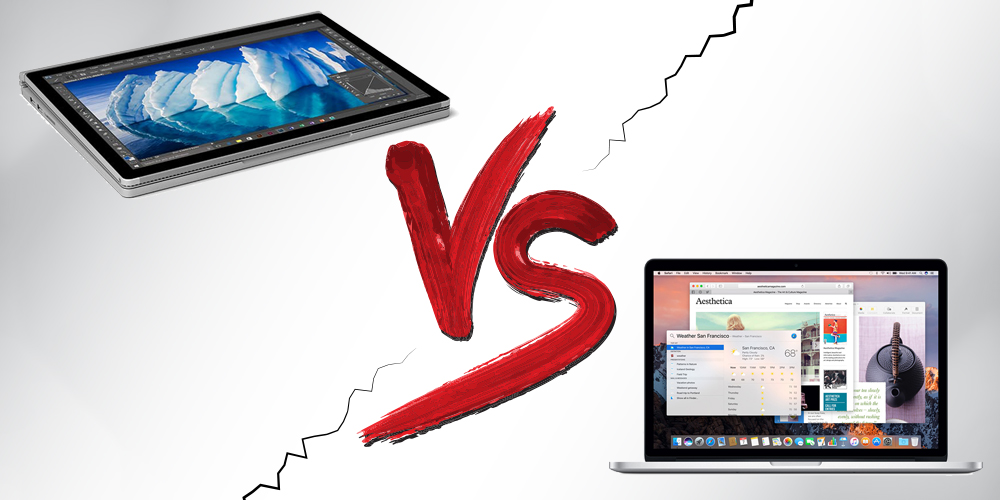Today, Apple announced two new MacBook Pros. Microsoft announced a new and upgraded Surface Book yesterday. There’s only one thing to do: compare specs, judge designs, and declare a winner.
DON’T MISS: Everything you need to know about Apple’s new MacBook Pro
There are two (really three!) versions of the MacBook Pro: 13-inch models with and without the OLED mutli-touch panel, and a 15-inch model that has to have the touch panel. On the Surface side, there’s only one chassis, the convertible 13-inch model. But there are a range of different specs you can buy, most notably versions with and without discrete graphics.
So let’s take a look at how the different versions stack up.

Specs
The base 13-inch MacBook Pro ships with a 2.0GHz Core i5, with 8GB of RAM, and a 256GB SSD. You can spec that all the way up to a 3.3GHz Core i7, 16GB of storage and a 1TB SSD if you want.
The Surface Book starts at $1,500 also, but with a lower-specced 128GB/8GB/Core i5 version. For that, you are getting a touchscreen and a stylus however.
The real advantage goes to the Surface Book in the higher configurations. You can get a version of the Surface Book with a discrete graphics card for $1,900, and upgrade that to a version with a more powerful GTX 965M graphics card and a Core i7 for $2,400.
To get discrete graphics from a MacBook Pro, you have to buy a 15-incher. It comes with a Core i7 and 16GB of RAM as standard, starting at $2,400 also.
Basically, you’re getting similar performance from the cheapest 13-inch Pro and the cheapest Surface Book. But Microsoft wins this, because you can get the performance of the 15-inch MacBook Pro, for the same price, in a much smaller body. Assuming you don’t want to lug a 15-inch laptop around but you need real graphics performance, the Surface Book is your only option.
Design and Size
Apple made a big deal of how thin the 13-inch Pro is, and for good reason. It’s a consistent 14.9mm thick, which is somehow thinner than the MacBook Air. The Surface Book is quite a lot thicker at its widest point, because of the “hinge gap” between the screen and keyboard. But at its thinnest point, it’s actually a whole millimeter thinner than the Pro.
On weight, the difference is more noticeable. The new MacBook Pro is an even three pounds, while the Surface Book tips the scales at 3.63 pounds.
Of course, the big design difference between the two is that the Surface Book’s screen detaches to become a tablet, while the MacBook Pro is just a laptop. I’m willing to be that a lot of people don’t care at all to have a 13-inch tablet as well as a laptop, but then again, I assume people have bought the iPad Pro.

Touch Input
The biggest change to the MacBook Pro is the addition of the new Touch Bar. On the $1,800 model and up, the row of function keys along the top of the keyboard have been changed to a multi-touch, multi-function OLED display. In regular use, the Touch Bar will display common controls like brightness and volume. When you delve into an application, the bar switches to provide specific functions, like tools in Photoshop or a scrolling bar for watching video.
Apple spent a lot of time and effort on stage trying to convince us that it’s a better system than a regular keyboard and mouse, or a touchscreen for that matter. For some applications — and for general browsing around the laptop — it does look fun, but playing a whole DJ set using a tiny touch bar is a bit of a reach.
The Surface Book goes the other way, with a full touchscreen and pressure-sensitive stylus. Because you can flip the screen around to turn the entire laptop into one big tablet, it is better for something like drawing, and it gives you the option to annotate documents or the like. But because it’s more effort to reach all the way up to the screen (or pull out the stylus), it’s probably going to get used less than the Touch Bar.
Overall, Touch Bar is better for small stuff, touchscreen is better for working on bigger projects. We’ll call this one a tie until we can try both in the real world.

Ports
The MacBook Pro has four amazing ports! Unfortunately, they’re all the same, and you probably don’t own anything that works with them. That’s right: Apple has fully bought into the USB-C craze, and equipped the MacBook Pro with four Thunderbolt 3/USB-C ports. (There’s only two ports on the base 13-inch MacBook Pro, though.) This is probably a good thing in the long run, since USB-C is an icnredibly versatile standard that can exchange data, power a display or even charge your laptop, all at the same time.
But in the immediate future, it’s bound to be far less useful that the Surface Book’s selection. Ever model of the Surface Book has two USB ports, a mini DisplayPort for connecting to monitors, a charging port, and an SD card reader. Point Microsoft.
Pricing
This one’s pretty much a wash. Both laptops start at $1,5000, although for the price, you get 256GB of storage for the MacBook Pro vs 128GB on the Surface Book. The impressive thing on Microsoft’s end is that for the same price as the base MacBook, you get a fully convertible laptop/tablet, with a stylus, with virtually the same specs as the new MacBook Pro.










